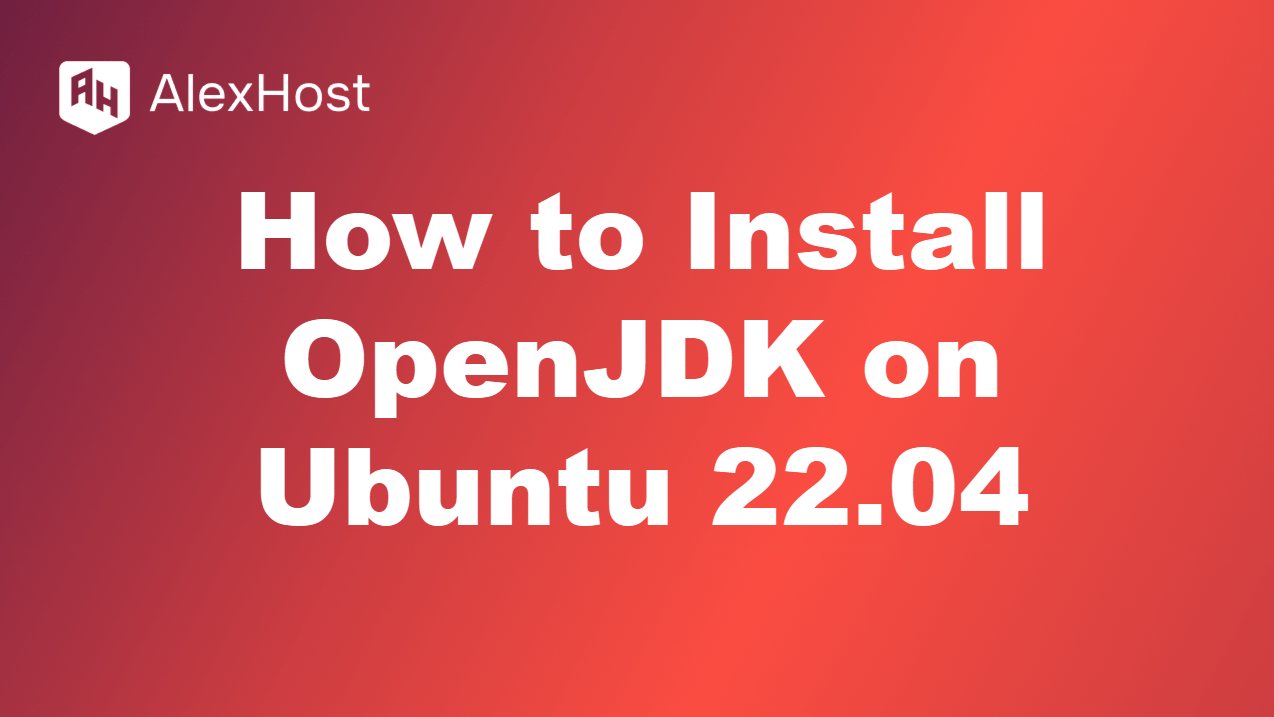SSH (Secure Shell) is a widely used protocol for securely accessing and managing remote servers over an encrypted connection. One of the most common tasks when working with SSH is copying files between your local machine and a remote server or between two remote servers. In this article, we’ll explore different ways to copy files […]
Install OpenJDK on Ubuntu 22.04 for Java Development on AlexHost VPS Why install OpenJDK on AlexHost? OpenJDK is a free, open-source Java SE implementation for building and running Java apps. AlexHost’s Ubuntu VPS with NVMe storage, LiteSpeed, root access, and DDoS protection provides a fast, secure platform for Java development. This guide covers installing OpenJDK […]
Unlock Website Insights with AlexHost Hosting Hosting your site on AlexHost’s reliable VPS or dedicated servers gives you the speed and security to supercharge your marketing. Pair that with these essential SEO and analytics tools, and you’ll track traffic, optimize rankings, and boost conversions like a pro. From free gems like Google Analytics to powerhouse […]
A 504 Gateway Timeout error is an HTTP status code that occurs when one server doesn’t receive a timely response from another server while trying to load a web page or fulfill a request. In simpler terms, it means that the server you are trying to reach is taking too long to respond, leading to […]
The 503 Service Unavailable error is a common HTTP status code that indicates the server is currently unable to handle the request. This is usually a temporary issue, which means the server may be overloaded, undergoing maintenance, or facing a configuration problem. In this article, we’ll explain what the 503 error means, the typical causes […]
XML (Extensible Markup Language) is a flexible, structured format used to store and transport data in a readable and organized way. XML is often used for communication between different systems, data sharing, and web services because of its platform-independent nature. While it resembles HTML in appearance, XML is primarily focused on carrying data rather than […]
Host Your Website Seamlessly with AlexHost VPS Why choose AlexHost for web hosting? Web hosting makes your website accessible online, storing files and delivering them to users. AlexHost’s VPS with NVMe SSD storage, LiteSpeed, full root access, and DDoS protection offers a fast, secure, and scalable hosting solution. This guide explains web hosting and how […]
Edit the Hosts File: Your Local DNS Superpower What’s the hosts file, and why tweak it? The hosts file is your computer’s secret map, linking domain names (like example.com) straight to IP addresses without asking the internet’s DNS servers. It’s a quick fix for testing sites locally, blocking distractions, or dodging DNS glitches. Whether on […]
A 500 Internal Server Error is one of the most common and frustrating errors you can encounter when visiting a website. It indicates that something went wrong on the server, but the server is unable to provide more specific details. This error can occur for various reasons, ranging from server misconfigurations to issues with the […]
Master DNS Resource Records on Your AlexHost VPS Why manage DNS on AlexHost? DNS resource records are the backbone of internet navigation, linking domains to IPs, email servers, and services. AlexHost’s VPS, with root access, NVMe speed, and DDoS protection, provides a secure platform to manage DNS for your website or app. This guide explains […]
















